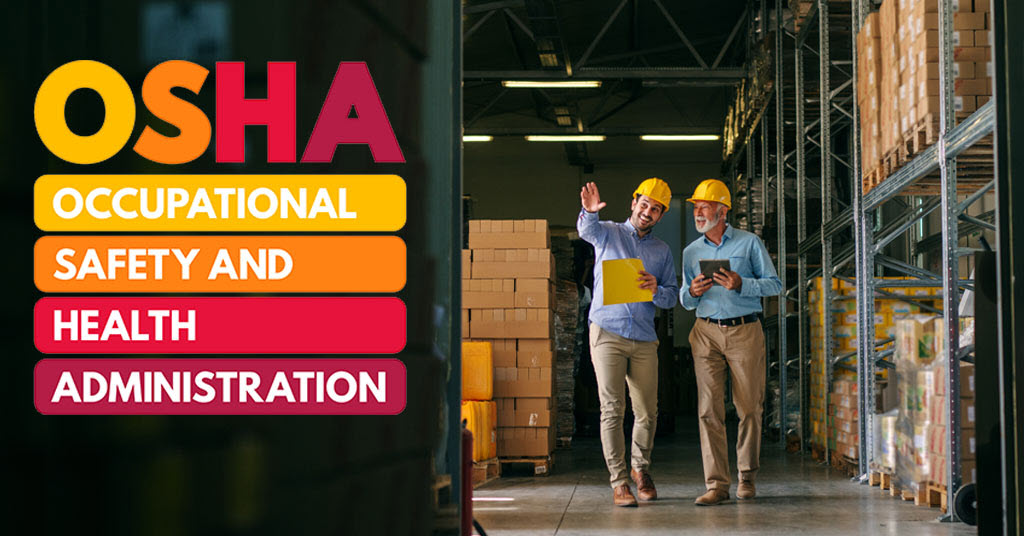
Enhancing Workplace Safety: OSHA’s Latest Focus on Warehouses and Distribution Centers

The U.S. Department of Labor’s Occupational Safety and Health Administration (OSHA) announced a new national emphasis program (NEP). It is an action that will impact many workplaces. Here’s how it will affect warehouses and distribution centers.
What Is an NEP?
NEPs are directives that focus OSHA inspectors on specific areas of workplace safety around specific hazards or workplaces. The department enacts them to respond to newly identified threats and needs that could use its resources and expertise.
The department enacts NEPs to create safer, healthier work environments. It regularly evaluates old and new NEPs based on injury and illness data, National Institute for Occupational Safety and Health (NIOSH) reports, peer-reviewed literature, OSHA inspection data and inspection findings.
NEPs help create safety standards by completing training, providing technical assistance and reaching out to struggling workplaces.
What’s in the New Warehouse NEP?
According to OSHA, the new NEP comes after seeing the significant growth of warehousing and distribution centers over the past decade. There are now nearly 2 million people working in the industry.
The U.S. Bureau of Labor Statistics reports that with the growth came increased rates of severe injury and illnesses — far more than private industry. Some sectors showed numbers that were twice as high as their nonpublic counterparts.
This latest NEP is a three-year emphasis program where OSHA will determine the causes of these hazards and work with establishments to mitigate them. The risks most commonly relate to falling, handling and storing materials, unsafe walking or working surfaces, industrial vehicle operation, lack of fire protection and blocked emergency exits. Further discovered issues will be added to the list to work on.
Two lists determine who will be evaluated. The first is workplaces with industry codes stated in the NEP. The second involves retailers with high rates of injury and illnesses — often related to loading and unloading materials.
Another part of the program involves evaluating ergonomic and heat-related hazards. OSHA may conduct a health inspection if it finds these in a workplace.
States must adopt the warehouse NEP or offer an alternative with equal standards.
What Does It Mean for Your Workplace?
Depending on your workplace, a lot could happen. Preparing and evaluating before an inspection can protect your workers and prevent violations.
There are two reasons your company could get inspected under the new NEP:
- You are a retailer with significant illness and injury rates, causing employees to take time off, work at limited duty or transfer positions.
- You are directly involved in an industry with codes evaluated in the NEP. These include the following:
- Warehouses
- Product distribution
- Postal service
- Mail carriers
- Delivery services
- Couriers
Contact your OSHA office if you need help determining whether your establishments fall under the program.
OSHA’S INSPECTION PRIORITIES
Under the new directive, OSHA will select worksites to inspect using gathered data on the number of incidents. It will supply its satellite offices with a master list of high-risk workplaces. It will also contact each office with high-risk retailers in their jurisdiction.
Local inspectors must complete assessments of the identified establishments by the end of next year. You can check your area office lists to see if you will likely be inspected. If you are, don’t stress. It’s always intimidating to have an inspector around, but it is for the safety of everyone involved. There will likely be opportunities to correct any negative findings if you’re honest and cooperative. That’s what the NEP is all about.
PREPARING FOR INSPECTION
You can do several things to prepare for an OSHA inspection related to the new warehouse NEP. Ensure the following are in place at your company:
- Training that complies with current OSHA guidelines
- Updated employee health records and incident reports
- Clear signs of injury prevention measures, such as protective equipment and clear walkways
- A maintenance schedule that corresponds to current OSHA guidance
- Health and safety policies for each division that meets current standards
Place special focus on trucks, electrical hazards, fire risks, locks, storage, heat illness potential, ergonomic issues, exit routes and potentially hazardous materials.
THE INSPECTION PROCESS
Each inspection could look different, but most begin when an OSHA inspector provides an opening statement to managers and employees. They will then request relative documentation and walk through your facility.
The inspector will interview employees and review their health records. Each NEP has specific criteria for what should and should not get cited in the inspection. The new program also covers any potential retaliation, protecting workers who report rules and behaviors that would fall under violation of health and safety standards.
During your inspection, you may receive anti-retaliation information and related resources for you and your workers. Employees who experience retaliation or fear they’re at risk of it can file a report with the Whistleblower Protection Program. The program protects workers that mention workplace noncompliance.
You can take measures to resolve violations, such as using safer materials in and around your building and providing better personal protective equipment to employees.
How the Program Will Enhance Workplace Safety
The new NEP aims to tackle critical safety issues in warehousing, distribution and retail spaces. Under its focus, OSHA will inform workplaces on what can improve and help them pave the path to a safer, healthier workforce.
OSHA will evaluate effectiveness at the end of the program year. The department will examine the number of employees the NEP impacted, the violations found, targeted hazards removed from included workplaces and the measures used to eliminate the risks.
It’s easy to fall behind on safety education and implementation, but following guidelines that preserve your workforce as industries evolve is vital. The people involved in your organization keep it going. You ethically and legally need to ensure their well-being under your roof.
It would help if you didn’t think of OSHA as a dominating force but as a tool to ensure your and other facilities are as safe as possible for anyone who enters them. The better you follow current guidelines, the smoother your operation can run since your employees can dodge more potential obstacles.
Contact your local OSHA office if you have concerns about how the NEP could impact your business. You can also find more information on the U.S. Bureau of Labor and Statistics website.
Creating a Safer Workplace
Worker safety should be the top priority of any employer. Dedicated researchers and inspectors are necessary to provide the best information on running compliant operations. OSHA’s new warehouse NEP can help you create a safer workplace.
Browse material handling signs and labels to help keep your warehouse or distribution center safe and compliant.

